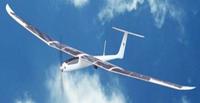-
Measuring the effect of fire on materials
Researchers at Universidad Carlos III de Madrid (UC3M) are developing an infrared measuring method to analyze the thermal properties and resistance to fire of composite materials; this advance would have applications in areas where fire safety requires that the composite materials withstand high temperatures
-
-
Scrub carbon dioxide directly from the atmosphere too expensive
While it is possible chemically to scrub carbon dioxide from Earth’s atmosphere in order to lessen the severity of global warming, the process is prohibitively expensive for now; best to focus on controls for coal-burning power plants, say researchers
-
-
Improving pothole repairs
The alarming increase in the number of road potholes in the United Kingdom — an outcome of reduced road maintenance, increasing traffic volumes, heavier loads, and repeated adverse weather — is creating potentially hazardous driving conditions, causing serious concerns to the authorities as well as to the public; engineers are looking foe ways to improve pothole repairs
-
-
“Smart Connector” to detect, pinpoint damage to cellular cables

Researchers have developed the Smart Connector, a new sensor that once installed in the connecting units of coaxial cables can provide information about equipment damage and pinpoint the exact location through self-diagnosing technologies — some of the most advanced in the field today
-
-
Study tracks safety of underground CO2 storage
An international team of geoscientists show that carbon dioxide can safely be stored underground in depleted natural gas fields; fhe experiment, in the Otway basin near Melbourne, Australia, is the most heavily monitored project for CO2 storage in the world
-
-
Brain's failure to appreciate others may permit atrocities
A person can become callous enough to commit human atrocities because of a failure in the part of the brain that is critical for social interaction; this function may disengage when people encounter others they consider disgusting, thus “dehumanizing” their victims by failing to acknowledge they have thoughts and feelings; this also may help explain how propaganda — depicting Tutsi in Rwanda as cockroaches and Hitler’s classification of Jews in Nazi Germany as vermin — has contributed to torture and genocide
-
-
A UAV that uses wind power as a bird does

An engineering Ph.D. students wins prizes for the design of an unmanned aerial vehicle (UAV) — dubbed Green Falcon II — which would be powered by the sun and wind; “While all airplanes mimic the shape of birds, the Green Falcon II will literally use the wind to power its movement, just as a bird would,” the young inventor says
-
-
Scarce minerals, metals threaten manufacturing
The growing scarcity of certain minerals and metals is leading to explosive prices and delivery delays; since the relationships among these resources are strong, both the causes of and the solutions to scarcity are complex; for a manufacturing organization with a global supply chain, this can spell trouble
-
-
Making better, cleaner cement
Humans the world over use more water, by volume, than any other material; in second place, at more than seventeen billion tons consumed each year, comes concrete made with Portland cement; making cement, however, releases massive amounts of carbon dioxide; structural studies at Berkeley Lab’s Advanced Light Source could point to reduced carbon emissions and stronger cements
-
-
Research may yield more compact antennas for military use
Researchers say that the tall, bulky antennas the U.S. military uses could be scrapped for low-profile, broadband antennas — thanks to a different approach to antenna design that replaces large dipole antennas with a more compact and conformal multi-mode radiator
-
-
Shale gas development and healthy water sources
Geological formation known as the Marcellus Shale contains gas reservoir holding nearly 500 trillion cubic feet of technically recoverable gas; at current use rates, that volume could meet the U.S. demand for natural gas for more than twenty years; trouble is, extracting shale gas involves considerable pollution risks for water; Pennsylvania has more miles of stream per unit land area than any other state in the United States – and it is concerned about the quality of its water if more shale gas is extracted
-
-
Sector Report for Thursday, 8 December 2011: Education Special
This report contains the following stories.
Plus 5 additional stories
-
-
Right degree helps grads compete in DHS hiring boom
Even amid the economic downturn, students who graduate with degrees in homeland security can breathe a bit easier knowing that they are more likely to find jobs than their fellow graduates; the agency’s hiring boom is expected to continue over the next several years as more and more baby boomers in their 50s begin to retire
-
-
Government preps next generation of cybersecurity employees
With the increasingly critical role that technology plays in everyday lives and the growing threat of hackers, the U.S. government is actively working to educate the next generation of cybersecurity officials
-
-
Why law enforcement officers should earn a degree in homeland security
In a guest column, Dennis Porter, a former law enforcement officer with more than thirty years of experience, argues that it is critical for U.S. national security that members of the law enforcement community return to school to obtain degrees in homeland security; with counterterrorism becoming an increasingly more crucial duty for law enforcement officers, it is imperative that they have the skills and knowledge to effectively combat extremism
-
More headlines
The long view
New Technology is Keeping the Skies Safe
DHS S&T Baggage, Cargo, and People Screening (BCP) Program develops state-of-the-art screening solutions to help secure airspace, communities, and borders
Factories First: Winning the Drone War Before It Starts
Wars are won by factories before they are won on the battlefield,Martin C. Feldmann writes, noting that the United States lacks the manufacturing depth for the coming drone age. Rectifying this situation “will take far more than procurement tweaks,” Feldmann writes. “It demands a national-level, wartime-scale industrial mobilization.”
How Artificial General Intelligence Could Affect the Rise and Fall of Nations
Visions for potential AGI futures: A new report from RAND aims to stimulate thinking among policymakers about possible impacts of the development of artificial general intelligence (AGI) on geopolitics and the world order.
Smaller Nuclear Reactors Spark Renewed Interest in a Once-Shunned Energy Source
In the past two years, half the states have taken action to promote nuclear power, from creating nuclear task forces to integrating nuclear into long-term energy plans.
Keeping the Lights on with Nuclear Waste: Radiochemistry Transforms Nuclear Waste into Strategic Materials
How UNLV radiochemistry is pioneering the future of energy in the Southwest by salvaging strategic materials from nuclear dumps –and making it safe.
Model Predicts Long-Term Effects of Nuclear Waste on Underground Disposal Systems
The simulations matched results from an underground lab experiment in Switzerland, suggesting modeling could be used to validate the safety of nuclear disposal sites.
